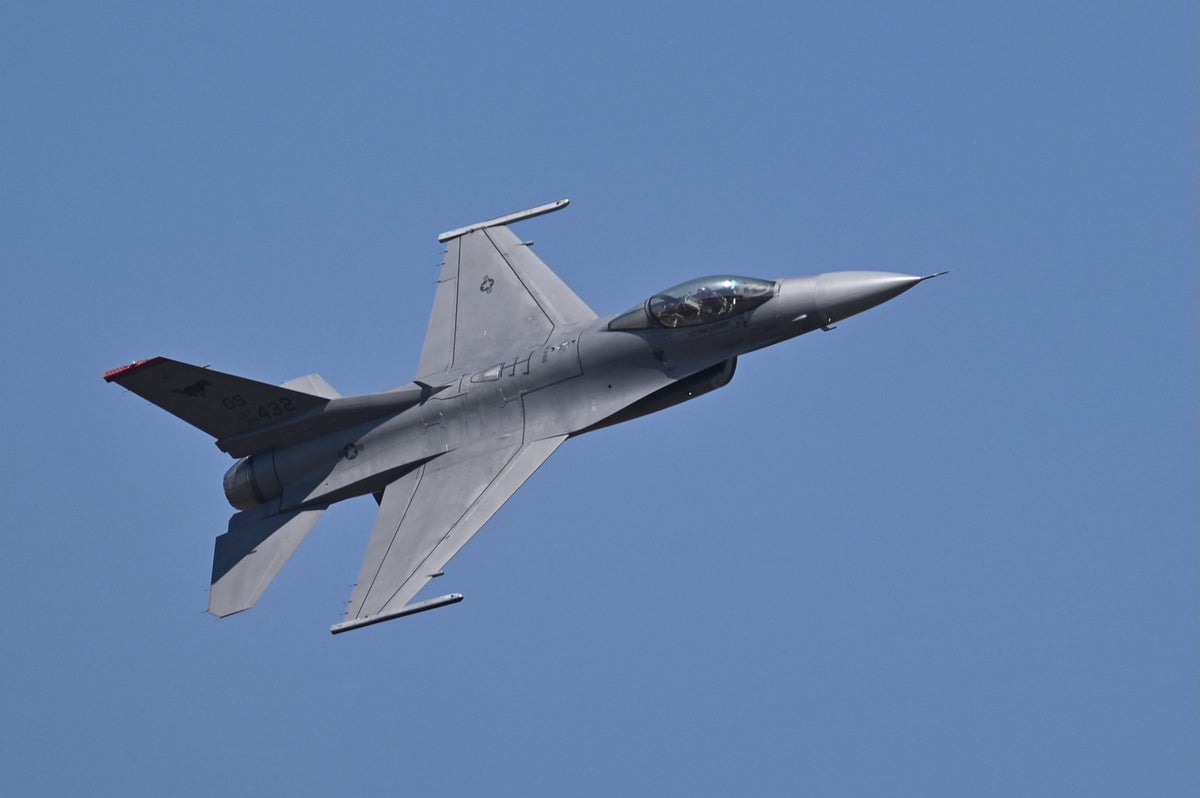
The announcement that Britain and the Netherlands are forming an “international coalition” to get Ukraine F-16 fighter jets is a significant step in the prolonged quest by Volodymyr Zelensky’s government to acquire the aircraft.
Rishi Sunak and the Dutch prime minister, Mark Rutte, want to ensure, says Downing Street, that allies will “provide Ukraine with combat air capabilities, supporting with everything from training to procuring” the warplanes and stress that “Ukraine’s rightful place is in Nato”.
The British government stated in February that it would begin training Ukrainian pilots to standard Nato techniques, and Downing Street stated this week, during President Zelensky’s visit, that the plan was to “build a new Ukrainian air force with Nato-standard F-16 jets”.
The RAF does not have F-16s, using the Eurofighter Typhoon and Lockheed Martin F-35B Lightning as the main strike aircraft instead. The F-16s, also made by Lockheed Martin in the US, are, however, widely used by other Nato member states, and around 3,000 are in service with 25 countries around the world.
Former Warsaw Pact states which have become Nato members have supplied Ukraine with Russian-origin MiGs and Sukhois. The Ukrainians, however, say that the F-16 is far more effective. General Serhiy Holubtsov, the head of the Ukrainian Air Force, said last month that the American planes are “four or five times better… the F-16 is a fighter that has become a multirole aircraft which can fulfil the entire spectrum of airborne tasks. The MiG-29 unfortunately, is an aircraft from the last century.”
One advantage of F-16s would be to enhance Ukraine’s ability to shoot down incoming Russian missiles – Kaliber cruise, Kinzhal hypersonic, and repurposed S-300 anti-aircraft missiles – and drones like the swarms of Iranian-built Shaheeds. That is rather than depending on ground-based anti-aircraft defences. The reported damage to a Patriot system through a Kinzhal strike shows the vulnerability of even the most advanced anti-missile systems.
The Biden administration, however, has refused so far to authorise the transfer of F-16s to Ukraine. One reason given is that it will take months to train pilots for the aircraft. The Ukrainians maintain that timeframe can be much shortened. Two Ukrainian pilots training to fly F-16s at an American military air base in Tucson, Arizona, are making fast progress, US officials acknowledge, and others may join the trial scheme.
Phil Breedlove, a former US Air Force general who was Nato’s supreme allied commander Europe, pointed out: “One thing which is absolutely consistent is that we always overestimated how long it will take Ukraine to assimilate and learn to employ the Western weapons we gave them… In fact, they taught us how to use better the counter-battery radars we gave them after the 2014 Russian invasion”.
Robert Emerson, a British security analyst, added: “Just look at how quickly the Ukrainians have adapted to the sheer amount and variety of weapons they have been sent from different countries in this war. The fact is that when you’re fighting for your country’s survival, you learn very quickly. Ukraine has highly experienced pilots, they won’t need the same time as rookies.”
The real reason why Washington is reticent about supplying Kyiv with F-16s, many observers believe, is fear of escalation. But such fears have always preceded the eventual sending of advanced Western weaponry during the conflict, and Russian threats of retaliation have remained just that – threats.
Britain’s supply of Storm Shadow missiles, with the Ukrainian pledge they won’t be used to attack inside Russia, may lead the US to also authorise longer-range missiles. The F-16 “coalition’’ may also pave the way for the aircraft President Zelensky says his country desperately needs to “defend our skies and protect our people”.







